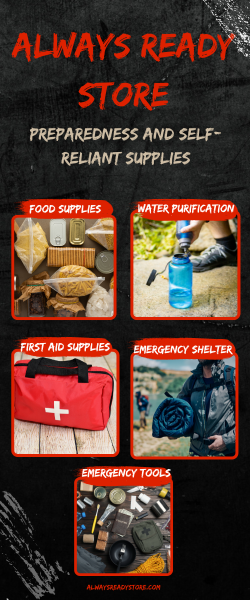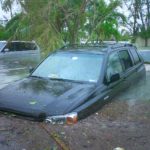
by Preparation | Mar 28, 2025 | Preparedness
 The Preparation Call is about getting prepared for potential difficulties ahead. It’s not a response or reaction to fear, but a call to get ready so that you can protect your family and others. Making preparation plans and learning skills should help you to remain more calm during adversities that may impact your area.
The Preparation Call is about getting prepared for potential difficulties ahead. It’s not a response or reaction to fear, but a call to get ready so that you can protect your family and others. Making preparation plans and learning skills should help you to remain more calm during adversities that may impact your area.
Remember, disasters can strike quickly and without warning. A natural disaster can force you to evacuate your neighborhood, work environment or school or can confine you to your house for an extended period of time. You will need adequate provisions, and a plan to deal with the difficulties that may impact your life. Look now at disaster and preparedness supplies that could benefit you during times of chaos.
What would you do if standard services-water, gas, electricity or telephones-were cut off? Regional authorities and first responders will be on the scene after a disaster, but they can not reach everybody right away. As a result, the best means to make you and your family more secure is to be prepared before disaster strikes.
Below are some suggestions for preparing for natural catastrophes:.
* Get to understand the kinds of catastrophes that can take place in your community.
* Make a household communications prepare that consists of an evacuation plan and coordinates with your school, work and community interaction strategies. Practice this strategy with your whole household.
* Create a disaster supplies kit that consists of enough supplies for each relative for at least 3 days. Keep in mind to examine your kit every 6 months.
* See to it your child understands what smoke detector, fire alarms and local neighborhood cautioning systems (horns, sirens) sound like and ways to react.
* Instruct your kid how and, equally vital, when to call for help. Even relatively children can be instructed how and when to call for emergency assistance.
* Children ought to memorize their family name, address and contact number. They should likewise understand where to satisfy in case of an emergency. Some children may not be old sufficient to memorize the details. They could hold a little index card that details emergency info to give to a grownup or baby sitter.
* If you commute to work, see to it you understand alternative routes and hold suitable supplies, such as a disaster supplies kit in your vehicle and a compact kit with bare necessary products such as a flashlight and whistle on mass transit.
Being ready helps you and your family reduce the impact of a disaster such as a cyclone or earthquake or an emergency such as a fire or a busted leg.
The Red Cross has ideas and techniques to help you prepare. The time to obtain ready for unforeseen situations is now-while you have time to strategy.
If you are needing readiness and preparation supplies, go to: http://www.alwaysreadystore.com
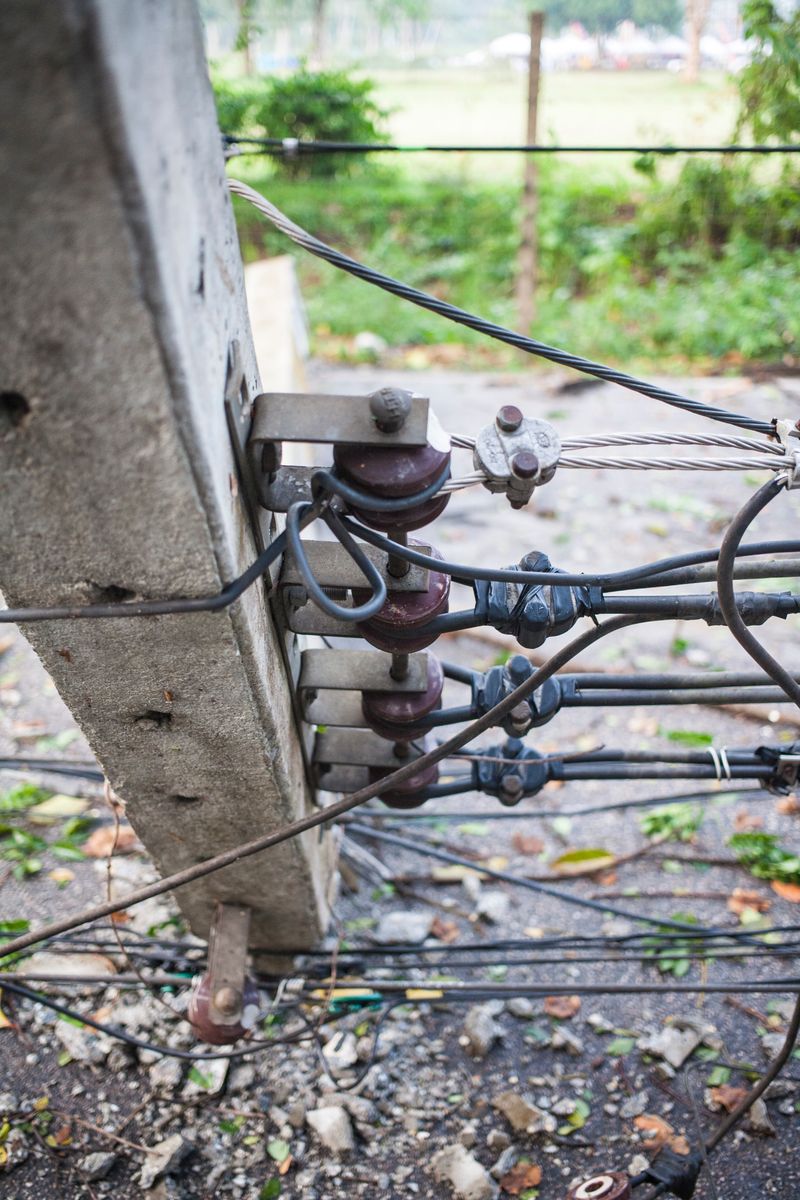
by Preparation | Mar 28, 2025 | Preparation Guide, Preparedness
In today’s unpredictable world, emergency situations can happen to anyone at any time. Whether it is a natural disaster like a hurricane or a man-made disaster, being prepared for such emergency situations is critical. Emergency preparedness involves taking specific steps to plan, prepare and respond to unexpected events. In this article, we will explore the top 5 questions people ask about specific steps for emergency preparedness.
1. What Is Emergency Preparedness?
Emergency preparedness refers to the process of planning, preparing, and responding to emergency situations. These events may include a variety of natural disasters or human-made threats. Being well prepared for such situations can help to minimize the potential damage and loss of life.
2. Why Is Emergency Preparedness Important?
Emergency preparedness is essential because it can save lives and protect property. In times of an emergency, every second counts. Having a well-planned emergency preparedness plan in place can help you and your family act fast, stay safe and survive. It can also help to reduce the burden on emergency services.
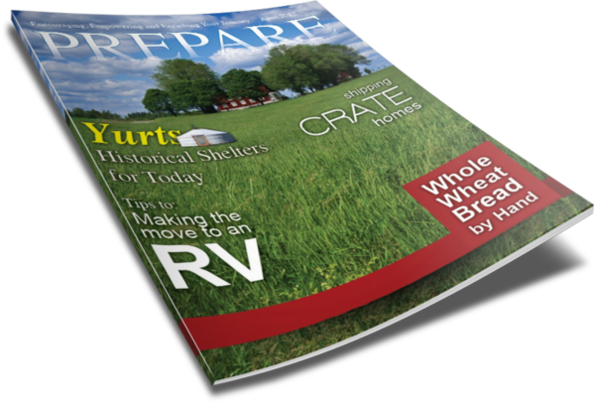
PREPARE Magazine
3. What Are the Key Elements of Emergency Preparedness?
The key elements of emergency preparedness include risk assessments, emergency plans, communication strategies, and emergency kits. Risk assessments involve evaluating potential threats and hazards that may arise in a particular area. An emergency plan outlines the steps to take during an emergency, including evacuation routes, communication plans, and emergency contacts. Communication strategies include alert systems, warning signals, and response protocols. Emergency kits should contain essential items like food, water, shelter, medication, and tools.
4. What Are Some Specific Steps to Take for Emergency Preparedness?
It is important to have a well-established emergency preparedness plan in place that takes into account the specific hazards and risks in your area. This may include the development of emergency communication strategies and evacuation plans. You should also create and maintain an emergency kit that includes essential items such as food, water, first aid supplies, flashlights, and a radio. Additionally, training for various emergencies, including CPR and basic first aid, can support in an emergency.
5. What Are Some Essential Items for Emergency Preparedness Kits?
Emergency kits should contain items that can sustain you and your family for at least 72 hours. Essential items include food, water, shelter (i.e., blankets, emergency shelter), first aid supplies, hygiene items, medication, communication devices, and necessary tools (i.e., whistle, compass, flashlight, and batteries).
Conclusion:
Emergency preparedness is a critical aspect of life that cannot be ignored. It is crucial to have a holistic preparedness plan that considers all the possible risks and hazards in your area. Specific steps for emergency preparedness may include risk assessment, development of emergency plans, and maintenance of emergency kits. Remember, the safety of you and your family starts with preparedness.

by Preparation | Mar 28, 2025 | Preparation Guide, Preparation Supplies, Preparedness
 Today, many families are preparing for what they fear is a pending doomsday scenario. It seems that everywhere you turn, there is a new warning about a cataclysmic event that will thrust us back into a primitive society and change our lives forever. News media and conspiracy mongers are churning-up their fear stories, and record numbers of people are tuning-in to hear the latest discouraging report.
Today, many families are preparing for what they fear is a pending doomsday scenario. It seems that everywhere you turn, there is a new warning about a cataclysmic event that will thrust us back into a primitive society and change our lives forever. News media and conspiracy mongers are churning-up their fear stories, and record numbers of people are tuning-in to hear the latest discouraging report.
It sure seems like we can’t get enough of the news of pending disasters. You would think we were passing a car-wreck on the highway and frantically turning our heads to see what we might view in the carnage. Are we so fixated on disaster and chaos that we get drawn-in by the very possibility that we just might be involved in some tragedy of massive proportions?
When you really think about it, our culture has been well-conditioned to expect and react to fear and tragedy. In fact, our society feeds on disaster and pays handsomely to be entertained with gore, horror, and violence. Hollywood knows our nature, and continues to crank-out disturbing films because they profit from our appetite for being frightened and disgusted with images of pain and suffering.
I certainly don’t believe that everyone has a desire to dwell on the sufferings of others, but we can’t ignore that marketing research shows that tragedy increases viewership. With that being the case, it certainly stands to reason that media outlets have a major opportunity to ramp-up the fear tones and cash-in on the gloom reports and conspiracies.
A while back I wrote an article called “Doomsday Survival, or Preparation Call”. The gist of that article is generally about the reaction (and over-reaction) of fear that has driven the preparedness movement. I know I get on a soapbox, but I just get so disappointed in seeing and hearing about so many families rushing-about preparing for the pending doomsday scenario. People are hoarding food and supplies, booby-trapping their land, buying every weapon they can find, and even purchasing underground bunkers to survive-in when this cataclysmic disaster occurs.
Now, certainly I believe we need to be in preparation. I don’t need to watch the news to know that there are difficulties ahead that we need to prepare for. I can’t even get a weather forecast that is accurate, why should I expect for a minute that CNN will give me any reasonable information to help me prepare my family?
The concern I have is, there are a lot of people yelling “fire” in a crowded area. People are being trampled and hurt because some over-dramatic people are screaming fear and pain. It’s fueling the panic, and people are being hurt.
I’ve been preaching the need for preparedness for a long time. In fact, I felt a “call” to prepare over 25 years ago. The preparedness call I felt, was not about fear and suffering. It was not about huddling in my lookout tower and waiting with my gun to shoot my neighbor who was coming to me for help. The preparation call I received was about getting my family ready, so we would not be in panic when things get a bit difficult – and will be able to help others. My preparation call was about getting ready, spiritually, emotionally, financially, and physically. Getting prepared was never a reaction to fear, but being ready so we could react with calm.
Here is the thing for me… a few years back we stored a lot of supplies and thought we were ready for the big catastrophic doomsday show. I mean, I thought… bring it on, because we have extra pop-tarts if the grid goes down. How naive, and silly to assume we were “prepared” for disaster because we had a few hundred pounds of dry goods. Granted we were better prepared than most, but emotionally… I imagine if the power was off for two days there would have been intense wailing and gnashing of teeth!
The fact is, many people today are storing some food and water, and have candles at-the-ready. They assume they are well-prepared because they have a month’s supply of food in the basement.
Even the most avid “prepper” assumes they are ready. They may have six-months of supplies, and can shoot a deer at 150 yards, but… I really wonder if they are truly prepared. Are they ready to really endure the disruption of life as we know it?
I’ve thought often about this and wonder how we might all react to overwhelming tragedy. Will we bond together and help each other overcome the difficulty, or will we do like many preppers are planning – hide in the hills and expect to shoot the first person who crosses our aim.
How will our families survive, if a spouse is overwhelmed with the intense shock of the situation and just can not cope with the situation? Are we so tough that we assume our family will all just hold hands and laugh while eating our ready meals? A lot of the families I know can’t even sit together for thirty minutes, so I doubt they will be ready to huddle around a candle and tell stories.
So, are we preparing for the emotional shock that might come from a massive catastrophe? Are we preparing to turn family and friends away because we don’t have enough food for our long-term survival, if we feed them?
If my heart becomes so hardened during perilous times that I am capable of turning-away families who need food or help, then I really don’t want to prepare. What kind of life is left for us, if we ignore the hurting people inside our community simply because they were too naive or lazy to get ready?
I realize many will disagree, and that’s fine. I certainly do not have a moral badge that gives me any authority to pass judgement. The point I’m trying to make is… today (before a tragedy hits) I can not see me turning away someone who comes to me for help.
So, unfortunately, I think we have a long way to go before we are truly prepared. In my humble view, there is far too much emphasis on loading guns and stashing grub. For s0me, that’s their ultimate strategy – survival at all cost. That’s fine, and certainly important. But… if we lose our moral values and conscience in being open to helping our neighbors – what will our society look like post-doomsday?
Bottom line in my rant ….
Get Prepared – but do not prepare because you are afraid. Prepare emotionally, spiritually, and physically. Prepare now to answer the question… what will I do when my neighbor comes to me for help?
Seek God, and His peace. One of my favorite passages of Scripture says:
So do not fear, for I am with you;
do not be dismayed, for I am your God.
I will strengthen you and help you;
I will uphold you with my righteous right hand.
Isaiah 41:10

by Preparation | Mar 28, 2025 | Preparation Guide, Preparation Supplies, Preparedness
 Water is among the standard demands of guys and among the most important aspects of life. It is crucial for numerous reasons. It is required for hydration in order to endure. Individuals have to consume water frequently in order to renew the loss of fluid in the body and to quench the thirst.
Water is among the standard demands of guys and among the most important aspects of life. It is crucial for numerous reasons. It is required for hydration in order to endure. Individuals have to consume water frequently in order to renew the loss of fluid in the body and to quench the thirst.
Water is vital to a body. Pure water is required for optimum health. It is likewise utilized for other vital tasks of men such as bathing, cleaning and food preparation.
Water can come from rain, stream or with other sources. Water is brought in houses with plumbing from regional water stations. Residences can save water using a water tank. Some designs of water storage tank can be used to gather rain water.
A clean, decontaminated bottle can be used for water storage. Containers made from thermoplastic have been designed for water storage. Since ancient times, individuals have actually invented containers from different products for the function for storing water.
Water storage containers are essential for survival in a wilderness adventure. A water storage container is among the few essential things that can be brought by survivalist campers. A bottle is maybe the most popular mobile type of water storage. It can be of different designs, materials and shapes. The Sigg bottle, a Swiss-made water storage container made from true aluminum is among the popular bottles for outdoor activities. It has been thought about by Backpacker Magazine as one of the most difficult water bottles in the world.
The company that produces Sigg bottle was established in Biel, Switzerland by Ferdinand Sigg in 1908. It used to make kitchenware and electrical devices made from aluminum. However, in 1998, it focused on producing aluminum bottles. The Sigg Bottle is among the most identifiable brand names of aluminum bottles in Europe.
Though made from aluminum, Sigg bottles can be available in numerous designs. Different online shops have actually offered Sigg bottles on their product. You can discover this product together with other outdoor devices products. Nalgene bottles and bottles of different brand names can also be found in the market.
An oasis is water storage in the desert. A well is a popular type of water storage where people can acquire water at no expense. Water tank is utilized to collect water in homes and in plants. Keeping water can be essential in times of dry spell and deficiency of water supply. Water is needed for survival. Although the earth is fulled of water, just a particular percentage is suitable for consuming.
by Preparation | Mar 28, 2025 | Preparedness
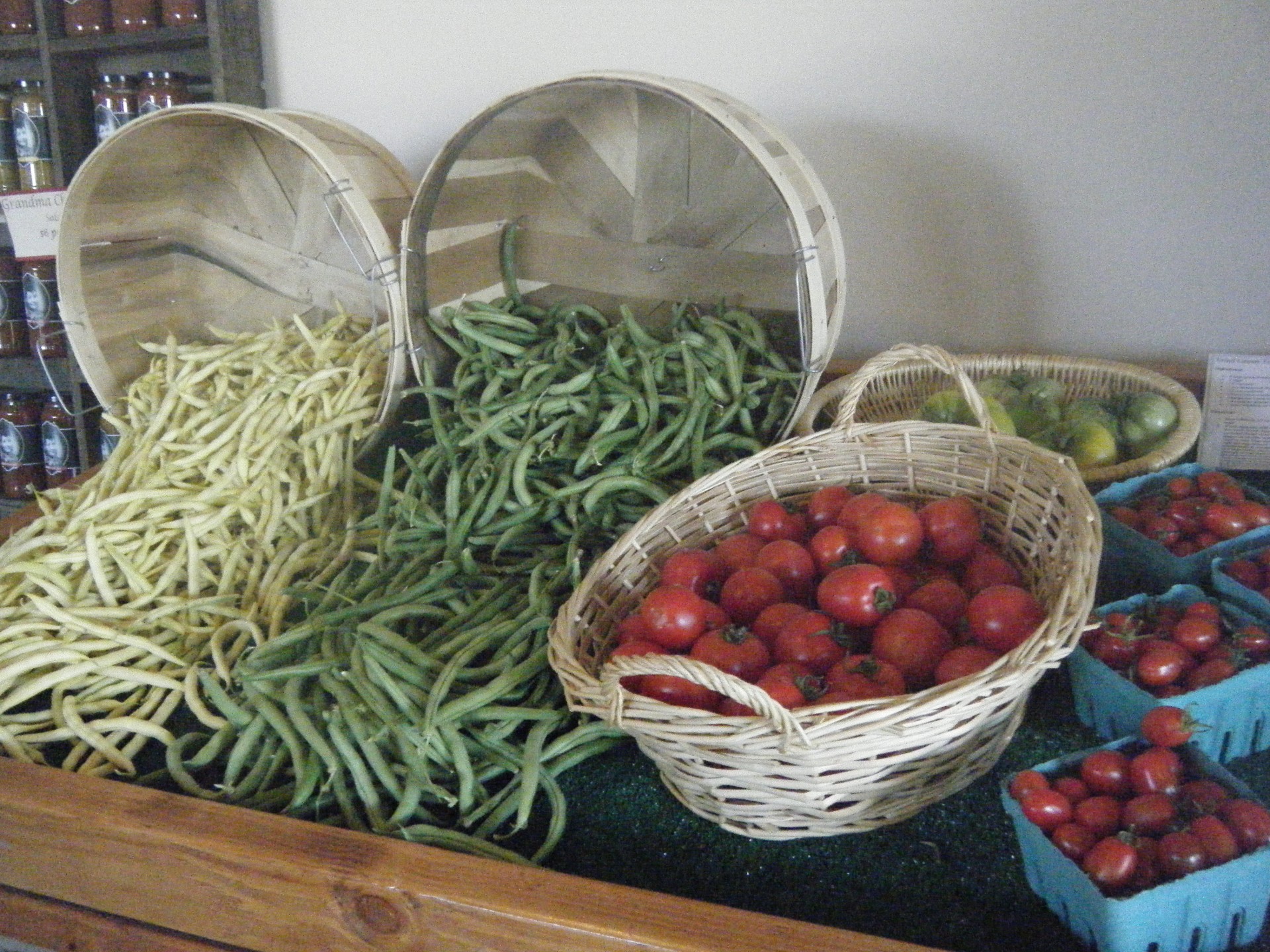
by Preparation | Mar 28, 2025 | Preparation Guide, Preparation Supplies, Preparedness
It seems that everywhere you go now people are looking for ways to be better prepared for potential difficulties ahead. Most people consider Long-Term food storage as one of the areas they are most concerned about. They look for helpful ideas on ways to store food supplies in the event there is a need.
Whether you agree with the need for long-term food storage or not, it is never a bad idea to have at least a small stockpile of food in the event of an emergency. Inclement weather events, power outages, and other disasters could make finding food outside of your home nearly impossible. Having some food and water supplies to fall back on is a smart and safe plan.
Why Should You Have Long-Term Food Storage?
Consider this very realistic scenario: What if you were caught in a long-term power outage due to a severe storm that caused flooding and major damage to roadways. Years ago, my family was impacted by a hurricane that took an unexpected turn and ended-up as a direct hit on our area. We had some supplies on hand, but not enough really to get us through a long-term situation. We survived but we should have been better prepared. We never imagined that we would be stuck in our home for weeks.
Events such as this, and a long list of other possibilities, could happen to you. Having a plan to survive and thrive in any situation, including enough food and water to fall back on, will keep you and your family safe and healthy despite the drastic situation.
How Much Food Should You Store?
Every home should have a minimum of five days’ worth of food and water appropriate for their family size, but having at least two weeks’ worth is much preferred. The rule of thumb for water is one gallon of water per person per day, and do not forget to count children and pets at up to a full gallon of water each as well. The amount of food will depend on your family, but there should be enough to provide enough calories and nutrition to keep you healthy. At the very minimum, each family member should be able to have at least one full meal per day.
What Kinds of Food Should You Store?
You will want to stock food that has a minimum of a 3-6 month shelf life, and keep that stock rotated so that nothing is spoiled should an emergency occur. Look for canned goods and other non-perishable foods that your family will eat. It will not do much good to only stock canned foods that no-one likes, because then it will be less likely that everyone will consume enough food and get the proper nutrition.
What Are Some Examples of Foods to Store?
Ready to eat canned goods that do not require cooking before consumption, granola bars, dried milk, peanut butter, nuts, and protein bars are all examples of good items to store. Crackers, bread, and similar products are good to keep as well – as long as you keep the stock rotated and keep in mind that they will not last as long as non-perishable items.
How Do You Store Food Items Long Term?
Have a shelf, closet, pantry, or cellar dedicated to your emergency food storage. Everything in your emergency food supply should be stored in airtight containers and you will want to have extra storage containers and/or zip lock bags to keep opened items in. Keep a list or clearly mark all boxes, cans, and bags with expiration dates and “opened on” dates and keep your stock rotated and free of expired items.
Keeping a stockpile of food and water for your family to fall back on in times of need is a responsible part of emergency preparedness. Should a large storm or other disaster occur in your area, you are more likely to be able to survive comfortably for longer. These tips should help you build and maintain a long-term food storage.

 The Preparation Call is about getting prepared for potential difficulties ahead. It’s not a response or reaction to fear, but a call to get ready so that you can protect your family and others. Making preparation plans and learning skills should help you to remain more calm during adversities that may impact your area.
The Preparation Call is about getting prepared for potential difficulties ahead. It’s not a response or reaction to fear, but a call to get ready so that you can protect your family and others. Making preparation plans and learning skills should help you to remain more calm during adversities that may impact your area.





